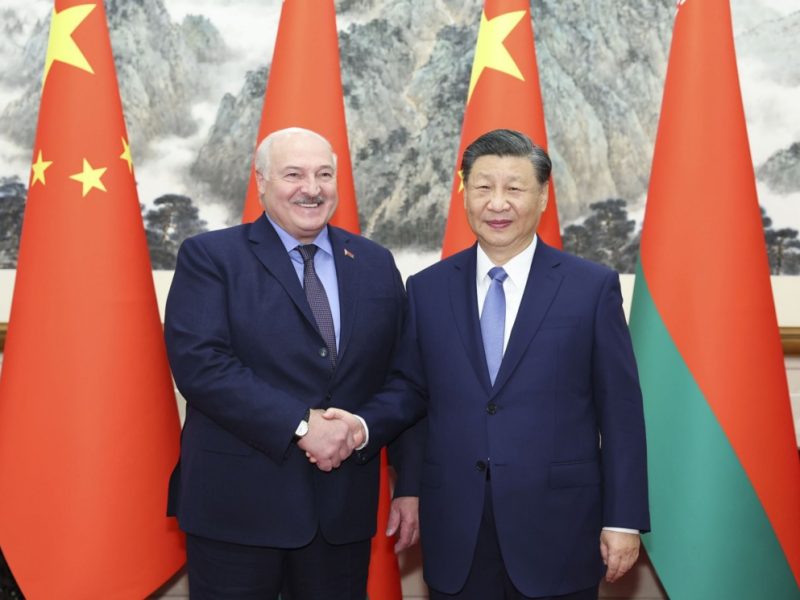Central Asian countries, specifically Kazakhstan, Kyrgyzstan and Tajikistan bordering with China share 2050-mile border with Xinjiang. There is a mixed feelings about China among Central Asian countries – China is seen as a great investor for the future of the countries and many young students in Central Asia are starting to learn Chinese language. Chinese companies and projects are often seen as more credible than locals. Confucius Institutes are full of talented young students chasing the opportunities that China offers. Locals at an individual level do not care about these broader issues and are instead trying to navigate their way to prosperity among the economic boom they see in China.
Rune Steenberg believes that Many Central Asians’ strong distrust of foreign, and particularly Chinese, firms and their misgivings about their own governments have made this task more difficult. The more that Chinese companies involve themselves in Central Asian communities, the more enmeshed they have become to local problems like corruption or local political fights.
Central Asia Barometer is a Bishkek-based nonprofit that engages in applied social science research. It conducts large-scale public opinions surveys in the Central Asia twice annually. One key question is how respondents perceive about China.
In Kazakhstan, Kyrgyzstan, and Uzbekistan the most common response to this question is “somewhat favorable.” Yet in all three countries, when asked about China, the share of people giving a favorable answer has dropped noticeably in recent years.
Kazakhstan has faced more pressure in the last five years from China as Kazakh authorities deal with local anger at the Chinese government’s forced detentions of ethnic minorities (especially Uyghurs) in the Xinjiang region.
In 2011, fighting broke out between oil workers and the Kazakh state in Zhanaozen leading to several deaths—Chinese company CITIC was among the investors and received some blame for the bad pay which appeared to underpin the protests. Smaller scale brawls between Kazakh and Chinese workers are frequent. As seen currently in Kazakhstan, protests are usually linked to bad working conditions, clashes between workers, or environmental damage. There is also usually a strong undertone of local politics. However, in the communication between Chinese and Central Asian people there are still an immense problem around cultural understanding and language issues.
The “great wall of iron”, Beijing’s clampdown on ethnic Muslims of the Xinjiang including ethnic Kazakhs and Kyrgyz has spiraled into religious repression and internment camps detaining up to 2 million Muslims in Xinjiang;
A pressure on Central Asian governments to clamp down upon any type of Uyghur exile political expressions; As an effect hereof and the involvement of high government officials in such deals can be seen an influence on how the Uyghur case is covered in the media and public discourse where it is avoided or connected to the fight against Islamic fundamentalism.
Bradley Jardin: Kyrgyzstan’s leaders awarded a $386 million contract to a Chinese company in 2013, prompting a corruption scandal that led to the arrest of two former prime ministers. Protesters in Kyrgyzstan have demanded more scrutiny over Chinese-funded enterprises and the appropriateness of loans. However, it remains to be seen whether local authorities will suppress these protests or seek new ways to reduce the dependence on China. There are questions surrounding corrupt and pollutive practices of Chinese companies working in the region. Chinese firms tend to lower their standards in the region, ignoring requirements they usually adhere to back home.
Combined Heat and Power plant (CHP) in August 2017.
The 4-year modernization of the city’s only source of heat for over half a century was initiated by the ex-president, and cost $386 million, which was borrowed from China on credit. The contractor chosen for the project, Tebian Electric Apparatus Stock Co LTD (ТBЕА), which built two new boiler units, each with an emission capacity of 150 megawatts (MW) of power and 150 gigacalories of heat.
On 26 January 2018, during a period of unusually hard frosts, an accident at the CHP plant led to a four-day breakdown of its heating system.
Kyrgyzstan’s member of parliament demanded that the culprits be put behind bars and took themselves en masse to the CHP plant to discover why the boilers had packed up.
After the power plant’s director Nurlan Omurkul uulu was fired from his job, he made it public that the cause of the accident wasn’t incompetency of the specialists, but the money laundering and fraud of the money allocated to the rebuilding project. And the real cost of the modernization wasn’t $386 million, but $100 million less. “About 90% of the necessary materials and equipment were bought at an elevated price,”
In Kyrgyzstan, conflict between Kyrgyz and Chinese workers is frequent.
In August, 500 Kyrgyz villagers entered the site of a mine operated by a Chinese company and fought with its Han workers — hospitalizing 20 of them. Chinese companies are now working to counter negative perceptions. claims that Chinese workers are marrying Kyrgyz women in large numbers, even though only 60 such marriages were recorded from 2010 to 2018. Many critics of China in the region also fear an influx of Chinese immigrants, although the actual numbers seem low. From 1995 to 2014, around 93,000 people emigrated from China as part of an official Kazakhstan repatriation program. Only 80 of them were Han Chinese, China’s majority ethnic group, representing 92 percent of the overall population in China.

Umedjon Majidi – Author of the blog series, Expert/Research Consultant, Civic IDEA




